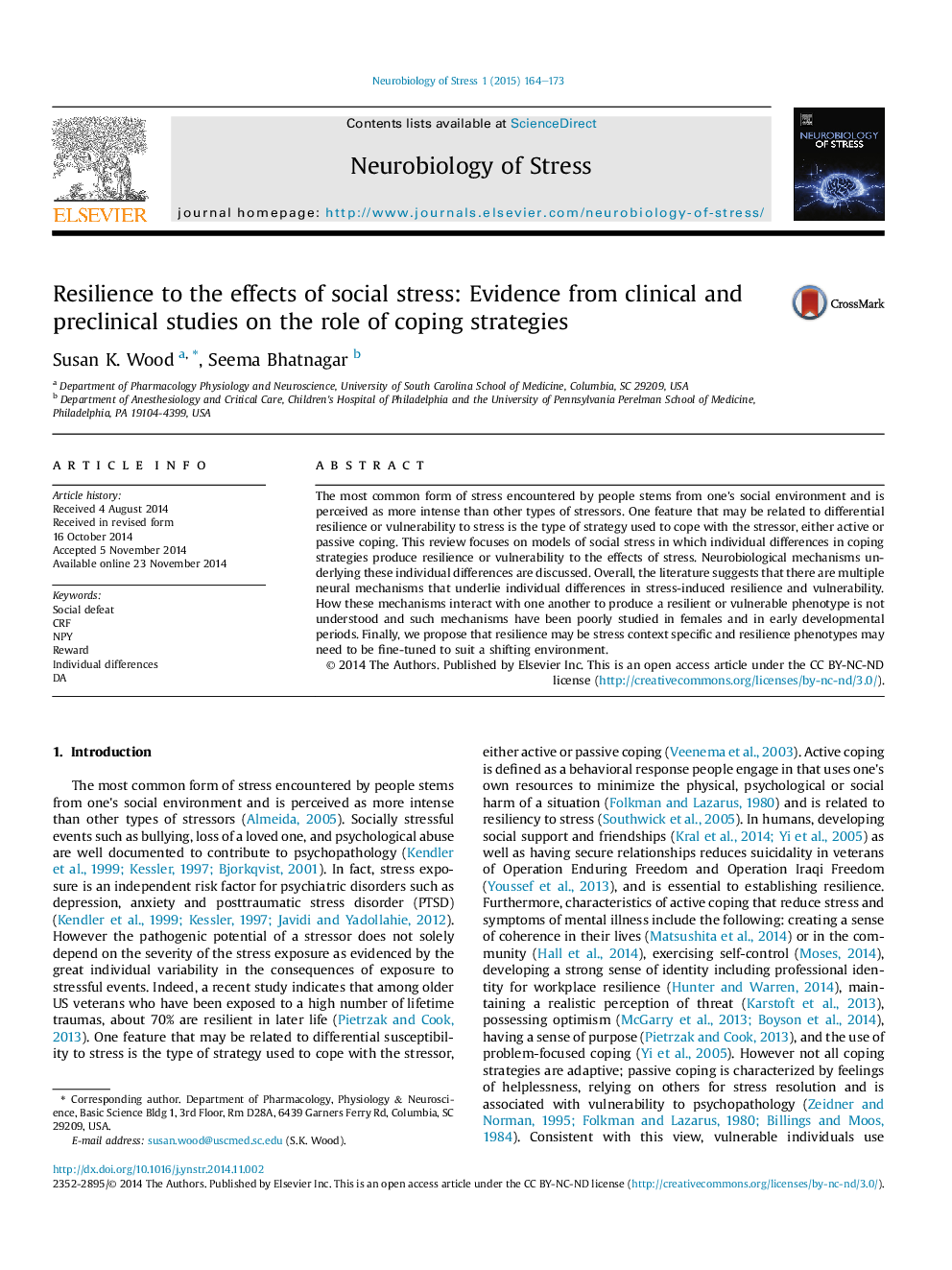| Article ID | Journal | Published Year | Pages | File Type |
|---|---|---|---|---|
| 4318563 | Neurobiology of Stress | 2015 | 10 Pages |
•Resilience is considered positive adaptation in the face of adversity.•Coping strategy impacts one's susceptibility to social stress-induced psychopathology.•Neurobiological substrates such as CRF, NPY and DA may impact stress susceptibility.•Individual differences within females and during adolescence are poorly understood.
The most common form of stress encountered by people stems from one's social environment and is perceived as more intense than other types of stressors. One feature that may be related to differential resilience or vulnerability to stress is the type of strategy used to cope with the stressor, either active or passive coping. This review focuses on models of social stress in which individual differences in coping strategies produce resilience or vulnerability to the effects of stress. Neurobiological mechanisms underlying these individual differences are discussed. Overall, the literature suggests that there are multiple neural mechanisms that underlie individual differences in stress-induced resilience and vulnerability. How these mechanisms interact with one another to produce a resilient or vulnerable phenotype is not understood and such mechanisms have been poorly studied in females and in early developmental periods. Finally, we propose that resilience may be stress context specific and resilience phenotypes may need to be fine-tuned to suit a shifting environment.
